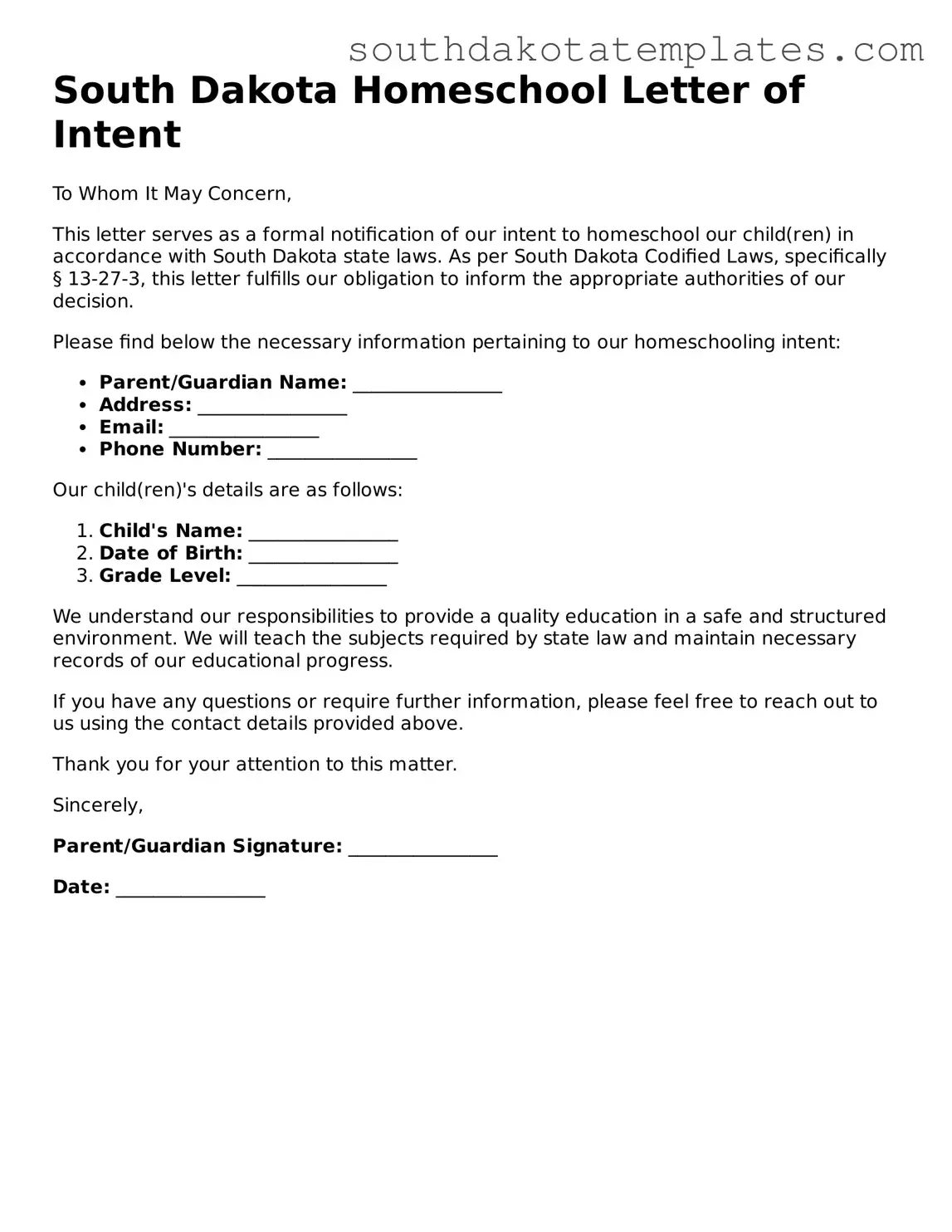Free South Dakota Homeschool Letter of Intent Document
The South Dakota Homeschool Letter of Intent form is a crucial document that parents must submit to officially notify the state of their intention to homeschool their children. This form outlines the educational plans and ensures compliance with state regulations. By taking this step, families can embark on their homeschooling journey with clarity and confidence.
Ready to start your homeschooling journey? Fill out the form by clicking the button below.
Get Homeschool Letter of Intent
